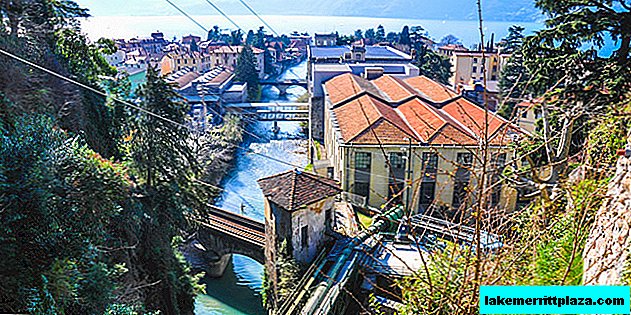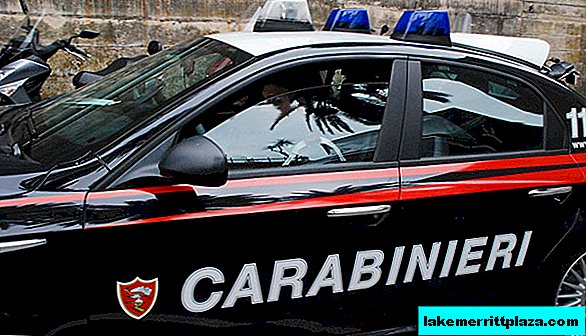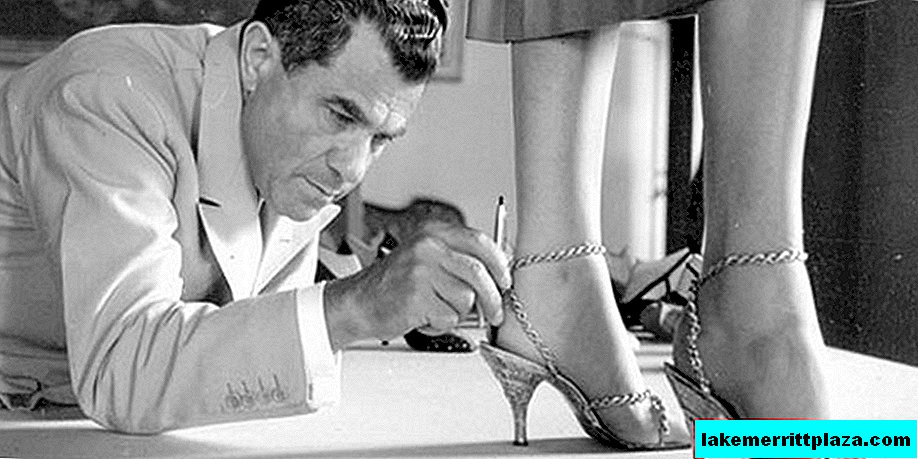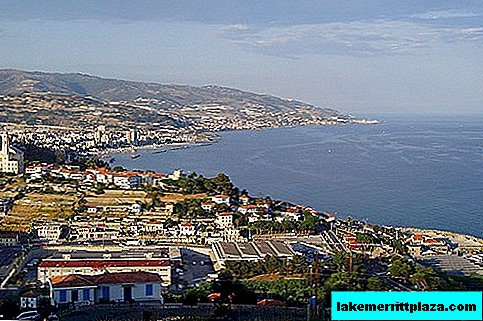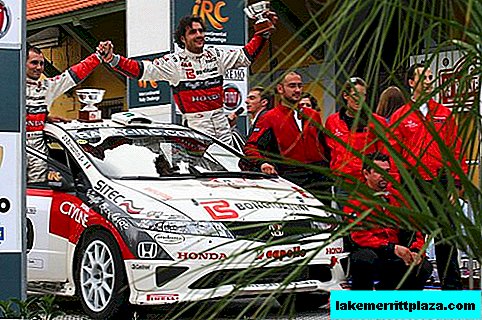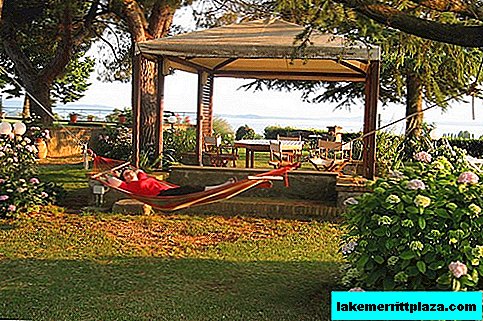Messina's main attraction is Cathedral Square (Piazza del Duomo). Here is the Cathedral (Duomo di Messina), with it - a museum-treasury. Nearby stands a bell tower, on the walls of which there is a unique clockwork made in Strasbourg in 1733. In front of the cathedral is the Fountain of Orion (Fontana di Orione), dedicated to the son of the sea god, Neptune. It is made of white marble and surrounded by fabulous creatures.
A three minute walk from Piazza del Duomo, on Piazza Antonello, is the Municipio di Messina. Between them - Università degli Studi di Messina - Segreterie Studenti. City Hall, Comune di Messina, is also nearby: from Cathedral Square, it is a five-minute walk to Piazza Unione Europea.
The tourist information office at City Hall (Ufficio informazioni turistiche) is located at 44 Piazza della Repubblica, in the Palazzo Satellite Palace (ground floor). It works from 9 a.m. to 1 p.m. from Monday to Friday, after lunch from 3 p.m. to 6.30 p.m. on Monday and Wednesday, and until 5 p.m. on Tuesday and Thursday.
We bring to your attention a list of the most interesting sights of Messina, which are worth seeing in one day.
Churches
Messina has very interesting temples, unlike the churches of mainland Italy. They miraculously combined Norman, Arabic, Byzantine, Gothic styles, which give them airiness, monumentality and unusualness. There are a lot of temples, and the main one is Duomo di Messina.
Cathedral

The Cathedral of Messina (Duomo di Messina) is the main temple of the city. The first church building was erected in 530 AD When Sicily was in the possession of the Arabs, the temple for two centuries turned into a mosque. In 1061, the Normans conquered Messina from them, and Count Roger I (Ruggero I di Sicilia) returned the attraction to the Christians. As a result, the temple underwent a significant reconstruction, and its consecration took place in 1197.
In the future, the church more than once suffered from earthquakes and fires, and therefore it was rebuilt and remade many times. The 1908 earthquake left nothing. The cathedral was restored in the twenties, but in 1943 it was seriously damaged by the bombing. That is why many decorative elements of the sights (sculptures, Byzantine mosaics) are copies of the original works that could not be preserved.
Currently, the cathedral is a complex that consists of the main building, the temple, located next to the bell tower, and the museum-treasury. The entrance to it is from the side.
The lower part of the church is faced with marble, the upper is made of light stone. Over the Romanesque facade of the church can be seen battlements. The central portal managed to survive: its appearance dates back to the XIV-XV centuries. It is decorated with carved elements and sculptures of saints. The statue of the Virgin and Child belongs to the XVI century.
There is a crypt on the territory of the cathedral, where in the old days local archbishops were buried. Also, several kings found eternal peace. The organ of the cathedral is the second largest in Italy and the third in Europe. He appeared here in 1948.
The bell tower of the Cathedral
If you stand facing the main entrance of the Cathedral, to the left of it is a bell tower 60 meters high. She also appeared on the site of the building destroyed by the earthquake of 1908. A sandstone structure was built, and therefore it changes its shade depending on the sunlight and time of day: the light range varies from bronze to light pink.
The main decoration of the building is a huge astronomical clock, developed in 1933 by the Strasbourg firm Ungerer. Their clockwork is extremely complex.

There are two dials on the bell tower: one looks at the square, the other at the cathedral. Under the temple facing the temple there are two tiers of arched windows from which the bells are visible. Below them is a clock on which together the numbers are the signs of the zodiac. In the center is the Sun, against which planets are visible. If you look closely, they move. Under this dial is the "Perpetual Calendar." An angel mounted near it points an arrow to today's date. Below it is the entrance to the bell tower.
If you look at the clock from the square, another picture opens. At the very top of the bell tower is a clock. Bells are visible under them, between which on the ledge of the facade of the cathedral there is a golden roaring lion, a symbol of the city. At noon, he begins to growl and wave a flag that he holds in his forepaws.
Below are two more bells. Along the edges on the ledges are two Dina and Klarenza (statue di Dina e Clarenza), who saved Messina during the siege of Karl of Anjou in 1282. At noon, women start beating the bells, tugging at the ropes. Between the alarms on the ledge is a cock, which at this time crowes and flaps its wings. Under the rooster in a niche there is a carousel, where the figures of the Virgin with the baby and saints are visible. At noon, angels with the prophets pass before the Virgin Mary.
Under this carousel is another. She points to the coming Christian holiday (Christmas, Easter, Pentecost). Below in the niche you can see the skeleton, which is a way of death. Every quarter hour, one of the figures appears in front of him, which symbolizes childhood, youth, maturity or old age.
Even lower you can see one of the mythological gods that symbolize the day of the week. For example, on Monday, here is Diana, the goddess of the hunt.
Church of St. Francis

The Basilica of St. Francis (Chiesa di San Francesco all'Immacolata) can be found at the intersection of Viale Boccetta and Via XXIV Maggio. It is located a kilometer from Duomo di Messina and is the second most important temple.
The construction of the temple began in 1254, 28 years after the death of St. Francis (Francesco d'Assisi) by order of noble citizens. The church was so important for the city that for a long time noble people were buried in it. So, in 1377, Federico IV of Aragon (Federico IV d'Aragona), the ruler of the Sicilian kingdom (regno di Sicilia), found his last refuge here.
The first major restoration of the building took place in the first half of the 18th century, when it was severely damaged by an earthquake. The next restoration work had to be carried out after a century and a half, when the basilica was damaged by a fire. After 1908, the ruins remained from the temple: only the central facade with a socket and two side apse survived. During the restoration, the architects did everything to restore the basilica to its former appearance. In 1928 the temple was opened for worship.
Church of the Annunciation of the Catalans

The Temple of the Annunciation of the Catalans (Chiesa SS. Annunziata dei Catalani) is located on Via Garibaldi Giuseppe, 111. He meets visitors at the port terminal. Located a hundred meters from Duomo di Messina.
The attraction was hardly affected by the earthquake of 1908. The building only dipped one and a half meters into the ground due to a change in the terrain. That is why, looking at the church, it seems that the temple drowned in the ground.
A church appeared at the end of the XII century. in place of a temple dedicated to Neptune. During the reign of the Aragonese dynasty, a royal chapel was housed in its walls. Since the end of the XV century. Catalan merchants gathered here for prayer, which is why the temple was given its current name.
Numerous earthquakes could not leave a trace on the temple, so it was redone more than once. The current appearance of the church is largely consistent with the facade of the XIII century. Geometric ornament, multi-colored stones, a cylindrical dome, narrow windows, false arches, between them - thin columns are a harmonious combination of Norman, Arabic, Byzantine styles.
Behind the temple, across the road, on Via Lepanto, 7, in the XVI century a monument was erected to Juan of Austria (don Juan de Austria). This is the Spanish admiral, under whose command the Turks were defeated at the Battle of Lepanto (Battaglia di Lepanto) in 1571. It was the largest naval battle that proved to the Europeans that the Turks can be defeated.
Church of Our Lady of the Germans

A five-minute walk from the Church of the Annunciation is the Church of Our Lady of the Germans (Chiesa di Santa Maria Alemanna). Built it in the XII century. Knights of the Teutonic Order. For Sicily, the temple looks unusual: there are very few Gothic buildings.
During construction near the church, a hospital was erected: for a long time knights stayed here, who went on crusades or returned from them. Interestingly, the writer Miguel de Cervantes Saavedra, the author of Don Quixote, who was wounded during the battle of Lepanto, was injured during this battle: he received three gunshot wounds. He stayed here for six months.
The knights left the church in the 15th century, and the church stood for a long time abandoned: there were warehouses, a store. At the beginning of the XVII century she suffered greatly from lightning, and after a century and a half - from an earthquake. But the catastrophe of 1908 barely touched the building, so the attraction was able to maintain its unique look. In 1911, the temple was shortened, dismantling the western facade: it required a city plan. After that, the building was repeatedly restored. Currently, various exhibitions, concerts, shows are held here.
Church of St. John of Malta
The Church of St. John of Malta (Chiesa di San Giovanni di Malta) is located on via San Giovanni di Malta, one kilometer from Duomo di Messina. Its history began in 540, when Saint Benidict of Nursia (San Benedetto da Norcia) sent the young monk Placido (Placido) to Messina to establish a monastery and a church of the Benedictine order. They erected it on the site of the former Roman necropolis. Six years later, Placido died under torture at the hands of a pirate who demanded that the monk renounce faith.
Over time, due to numerous raids, the monastery was completely destroyed and was rebuilt in 1086. After that, there was the residence of the Knights of the Order of Hospitallers of St. John of Jerusalem. In the XII century. The Church of John the Baptist took the name of John of Malta.
At the end of the XVI century. the temple was substantially redone. Famous architects and artists worked on the building, including the last student of Michelangelo (Michelangelo) - Giacomo del Duca (Giacomo Del Duca). During the reconstruction, the bodies of tortured monks were found, including - Placido. He was identified by a vessel hanging on his chest, where there was a tongue torn out by pirates.
The 1908 earthquake completely destroyed the building. At first it was decided to take it to the end and build a prefecture. It took the direct intervention of the Archbishop of Letterio D'Arrigo Ramondini to prevent this from happening. It took several years to rebuild the temple, it was opened in 1925. The Second World War also significantly damaged the building, but after the end of hostilities the temple was rebuilt.
Basilica Cristo Re
The first church that catches the eye of a traveler arriving from the sea is the Temple of the King of Heaven (Tempio Votivo di Cristo Re). It is located on a hilltop at Viale Principe Umberto.

This building is unusual, and in reality it is not so much a temple as a war memorial. Within its walls are thousands of niches in which the bodies of soldiers are buried, which died during the First World War. Inside the temple is a white marble sarcophagus, made in the form of a figure of a dead warrior.
The memorial was built in 1937 on the site of the castle, whose history began in the XII century: King Richard the Lionheart (Riccardo Cuor di Leone) built here the fortress Mategrifon (Matangrifone). He did this to control Messina and obtain the necessary concessions from the King of Sicily. Before sailing, Richard demolished part of the fort, but subsequent rulers of the city and the conquerors did not disregard this place: a castle was built here.
In 1282, a garrison of French soldiers from the rebellious citizens was hidden in its walls, and in the XVI century. it was significantly strengthened by Charles V (Carlo V), king of Spain. Since 1838, the fort housed a prison. After the earthquake of 1908, the ruins remained from the castle: only one of the towers, which can be seen now, also stood, as well as several fortress walls. One of them has a statue of Richard the Lionheart.
In the 30s, it was decided to build a memorial in the form of a temple here. Its baroque dome is visible from many points of the city: its height is 17 meters. And in the corners of the bath, eight statues were installed, signaling virtues.
In 1935, a bell appeared near the unfinished building, the largest - the third in Italy: its weight is 130 kg, its height is 2.8 m. It was poured out of the cannons that it was captured from the enemy in the First World War. Since then, he calls every evening, reminding the Italians that they died during all the wars.
From the observation deck of the temple offers excellent views of the sea, the harbor, the city and its surroundings.
Museums
There are few museums in Messina, but they are, and at the same time very interesting. For example, the Treasury of the Cathedral stores unique things that are not found anywhere. Among them - la Manta d'oro, the work of the Florentine jeweler, which on the day of the city is imposed on the letter of the Virgin, which lies on the altar of Duomo di Messina. The regional museum tells visitors about the history of Messina, the museum of the XX century introduces the events that took place here during the First and Second World War. The museum-aquarium is no less interesting: the flora and fauna of the Mediterranean Sea live here.
Regional Museum

The Regional Museum (Museo regionale di Messina) is located on Viale della Libertà, 465, three kilometers from Piazza del Duomo. It was founded in 1806 on the territory of the former monastery of St. George (monastero di San Gregorio), where it remained until the day when the earthquake of 1908 destroyed the city. Not only this building was lost, but also many exhibits stored in its walls. The items that were saved were placed in the premises of the former spinning mill, where they still remain.
Since then, the building has been constantly reconstructed in accordance with modern requirements for museums. Therefore, it is not uncommon for a tourist to get here during restoration work, and he sees only part of the exposition.
Near the alley, which leads to the entrance to the Museo regionale, you can see the original marble sculpture of Neptune. It was made in 1557 by Giovanni Angelo Montorsoli. The lobby is decorated with nine panels of gilded copper (XIX century). They tell the legend of the trip of local citizens to Palestine to the Virgin, who handed them a letter for Christians Messina.
The museum has thirteen rooms. Many things were brought here after the earthquake from the destroyed palaces, monasteries, temples. Among the exhibits are paintings, mosaics, statues, the history of which dates back to the XII century. Among the paintings are the works of Antonella da Messina (Antonello da Messina), Girolamo Alibrandi (Girolamo Alibrandi). Particular attention of visitors is attracted by two works of Caravaggio (Caravaggio). Here are the Adoration of the Shepherds (Adorazione dei pastori) and the Resurrection of Lazarus (Resurrezione di Lazzaro), written in 1609.
Cathedral Treasury
The Treasury of the Cathedral (Museo Tesoro del Duomo) is located inside the temple. The side entrance is from Via S. Giacomo, 2. The museum is spread over two floors and is divided into four rooms.
Here the gifts of people of different incomes and eras, household items and church utensils were combined. Among the exhibits is a lamp carved from solid rock crystal of the X-XII century, a reliquary of St. Marciano (Il Braccio reliquiario di San Marciano), made of gold. Its decoration imitates lace, and a hand is blessed from the sleeve, blessing in the Greek manner. The appearance of reliquary refers to the XII century. All this creates a powerful impression of human destinies concentrated in one place and time.

The most important exhibit of the museum is a sacred image made in the Byzantine style, the "Golden Mantle" (la Manta d'oro). It is annually, June 3, the day of the city, imposed on the letter of the Virgin, which lies on the main altar of the cathedral. Made by Mantoux, the Florentine sculptor and jeweler Innocenzo Mangani. He worked on the image for seven years and finished in 1668. In order to create it, a tax was levied on university graduates, which allowed to collect 3 thousand crowns. Manta is made of copper, gold, pearls and other precious stones that have been given to the Virgin for centuries by recognized citizens.
Twentieth Century Provincial Museum
The Provincial Museum of the 20th Century (Museo Provinciale Messina nel'900) can be found at Strada Comunale Scoppo, 2a. It opened in 2015 inside a former bunker that was built during the Second World War.. To make the bomb shelter as safe as possible, they dug it in the hill. The bunker covers an area of 900 m2 and is designed for 800 people.
Museum exhibits tell visitors the story of Messina over the past hundred years. The emphasis is on war. Here you can see various weapons, uniforms, equipment of the first half of the XX century. Including there are exhibits telling about the landing of the Anglo-American troops in 1943 in Sicily, which meant the end of the war in Messina.Among the exhibits are medals, various drawings, maps, photographs, educational panels telling about the war.
The museum periodically organizes receptions, conferences, discussions, film festivals, and concerts. For this purpose, a spacious conference room was equipped here and modern multimedia equipment was installed.
The museum is open every day from 10.30 to 13.00. Also, entrance to it is available after lunch from 16.30 to 19.30, except Saturday and Sunday.
Art Gallery Cuvour
The Cuvour Art Gallery (Galleria Arte Cavour) is located at 119 Corso Cavour. It has existed for about thirty years, and here you can see photographs, drawings and other works of contemporary Italian and foreign masters. There are also painting and photography courses. The entrance is free.
City aquarium

The city aquarium (Acquario comunale) was equipped at Villa Mazzini in the 60s. last century at the initiative of the Oceanographic Institute of Messina (Istituto Talassografico di Messina). Money for this was given by the credit company of Sicily. Located at: Piazza Unita 'd'Italia.
In 1986, the Aquarium was leased to the municipality of Messina, which created the research center Consortium for the Study of Spontaneous Disorders of Marine Organisms (CeSPOM) /
Now there are seventy species of fish, mollusks, crustaceans and reptiles of the Mediterranean Sea. For this, 22 tanks with a capacity of 2500 to 18 000 liters of water have been allocated. Inside, sea water is taken directly from the Strait of Messina.
At the same time, the aquarium is a research center. Particular attention is paid to the study of the waters of the Strait of Messina. For schoolchildren, practical classes in biology are periodically organized here.
Houses
Many houses and palaces in Messina appeared at the beginning of the last century, and therefore, given the antiquity of the city, they can be considered quite new. But this makes them no less interesting, since they designed the buildings, taking into account the plan of old streets and structures, while introducing new, modern elements.
Theater Vittorio Emanuele II

The Teatro Vittorio Emanuele II is located on Via Pozzo Leone 5. The building began in 1842 at the behest of the King of Sicily, Ferdinando II di Borbone. The opening took place in 1952.
At first it was called the Theater of St. Elizabeth (Teatro Sant'Elisabetta). It acquired its current name after the Expedition of a Thousand (Spedizione dei Mille), when it arrived on the island in 1860/61. General Giuseppe Garibaldi landed and defeated the Kingdom of the Two Sicilies (Regno delle Due Sicilie). As a result, the island went to the Sardinian kingdom (Regno di Sardegna). Then, in its composition, Sicily became part of a united Italy. And the theater was named after the first king, Vittorio Emanuele II.
The 1908 earthquake destroyed the building. The restoration was delayed: construction work was completed only in 1980. The opening took place only five years later. The season was opened by the opera Aida, an immortal creation by Giuseppe Verdi. It was she who was the last performance that sounded in the walls of the old theater before the destruction. The repertoire of the Vittorio Emanuele II Theater can be found here: www.teatrovittorioemanuele.it/.
Dzanka Palace

Dzanka Palace (Palazzo Zanca) is located on Piazza Unione Europea. The City Hall, Comune di Messina, is located on the ground floor of the Palazzo Zanca. Official website: www.comune.messina.it/.
Before the earthquake of 1908, the palace was part of a complex of structures that covered the harbor with a crescent moon. After the house was destroyed, restoration work began in December 1914 under the direction of (Antonio Zanca), and ended in 1924. Thanks to its creator, the palace received its current name. During the reconstruction, the house was separated from other structures.
As a result, the palace, built in the neoclassical style, occupied an area of 12 thousand m2. Inside the courtyard you can see various works of art that are dedicated to memorable events for Messina. There is also a fragment of the wall, the appearance of which dates back to the times of Ancient Greece.
Gallery Vittorio Emanuele III

The Galleria Vittorio Emanuele III Gallery is located on Piazza Antonello, across the street from the Municipality. This building is called by the locals "urban living room." But work is still underway. The gallery is a passage where it is planned to place shops, restaurants, cafes, offices (partially already exist). There will also be equipped rooms where you can hold various meetings, parties.
This is one of the few monumental structures, in the construction of the glass roof which was used for support not iron or cast iron, but metal. The construction of the building was completed in 1929. The main entrance to the passage is decorated with a snow-white arch, perfectly combined with the stucco molding of the interior and black and white floor. One of the internal stairs that is closer to via Oratorio della Pace was made taking into account the strong difference between city roads.
Palace of piacentini

Palazzo Piacentini is located on Via Tommaso Cannizzaro 116. It was erected on the site of a hospital destroyed by an earthquake. Now here is the palace of justice. Here is the court, the prosecutor's office, the bar.
The construction of the building began in 1912, but was soon stopped due to the First World War. Work was resumed only in 1923, before this the project was revised and slightly modified. The opening ceremony was held five years later.
The house occupies a large area and consists of three buildings (as architects solved the problem of sloping soil). The facade is decorated with marble mined in Sicily, decorated with corrugated half-columns. On the roof there is a large sculptural composition made of an alloy of aluminum and bronze. She is a chariot, which harnessed four horses. It is controlled by the goddess Minerva. Inside, the house is also decorated with marble and bronze elements.
University

The main building of the University of Messina (Università degli Studi di Messina) is located at piazza Pugliatti. At first it was a Jesuit college, which in 1548 was established by the founder of the order, the monk Ignazio di Loyola.
At the end of the XVII century. because of the uprising against the Spaniards, the university was closed and resumed its work a century and a half later, in 1837. But the students actively participated in the conspiracy against the Bourbons, so nine years later the institution was closed again. True, not for long: two years later, the university resumed its work, but the Sicilians were forbidden to join it.
The 1908 earthquake destroyed almost all of the university buildings. But already next year, the Faculty of Law resumed its work, and five years later four more opened. As for the buildings on piazza Pugliatti, many of them opened in the twenties, and the total area was 20 thousand m2.
After World War II, the university became larger due to additional buildings. Now there are 11 faculties in which 40 thousand students study. The piazza Pugliatti houses the Faculty of Economics, Law, Education, and Political Science.
Fountains and Monuments
Messina has a lot of monuments and fountains. At the entrance to the harbor, the ships are greeted by the Virgin, who holds in her hands a letter written by the townspeople. There is a monument dedicated to the Russian sailors, who first came to the aid of the townspeople after the earthquake of 1908. The Messinians and ancient heroes paid attention. There is a fountain dedicated to the founder of the city, Orion, as well as Poseidon, the god of the seas.
Statue of the madonna

A stele, at the top of which stands a bronze gilded statue of the Virgin (La Madonnina del Porto), the patroness of Messina, meets all the ships that call at the port. It is installed on Via Vittorio Emanuele II, 103-109.
A landmark appeared here in 1934. The length of the stele is 60 meters. The height of the statue of the Virgin Mary is six meters. In her hand she holds a letter. According to legend, the Theotokos wrote it in 42, when the Senate of Messina sent a delegation to Jerusalem to report on the conversion of the city to Christianity. Here they saw the Virgin. In September, delegates returned home with a Hebrew letter from the Virgin, to which a strand of her hair was attached.
A statue was installed on the roof of the old bastion, which was built in 1546. On it is written in large letters in Latin a line from the legendary letter of the Virgin, which she wrote to the townspeople: "We bless you and your state."
Orion Fountain

The white marble fountain of Orion (Fontana di Orione) is located on the Piazza del Duomo, in front of the bell tower of the Cathedral. It was created in 1553 by Giovanni Angelo Montorsoli, a student of Michelangelo. They installed a fountain in honor of the appearance of a water supply system, so that water began to flow into the homes of the Messinians.

In the middle of the fountain is a three-tier structure, on top of which is Orion. According to one of the myths, he founded the city. At his feet lies his dog. On the lower tiers and along the edges of the bowl are various mythical creatures and heroes.
Neptune Fountain
Neptune's Marble Fountain (Fontana del Nettuno) meets a traveler at the port entrance. It is installed near the Piazza Unità d'Italia, on Via G. Garibaldi. Created the fountain in 1557 by Giovanni Angelo Montorsoli, author of Fontana di Orione.
In the middle of the fountain - Neptune, taming the raging sea and two monsters located on the sides of the sea god, Charybdis and Scylla, who for a long time did not allow ships to sail along the strait. Thus, God proclaimed peace and tranquility in the local waters and offered Messina access to his wealth.

Two centuries after the fountain was established, a bronze statue of Karl of Bourbon was added to the sculptural composition, eighty years later - Francesco I. In 1848 there was an uprising against the Bourbons in Sicily, and both kings were melted down. The rebels cast bullets from the material received. Subsequently, the statues suffered from the bombing. Therefore, they were moved to the Regional Museum and replaced with copies.
First Neptune was installed in the port, he stood with his back to the sea. The god of the sea successfully survived the earthquake and tsunami of 1908. A quarter of a century later, the fountain was moved and installed on the embankment, where it is now. Neptune was deployed facing the Gulf of Messina.
Monument to Russian sailors
A bronze monument to the Russian sailors, heroes of mercy and self-sacrifice (Monument to Russian Sailors, Heroes of Mercy and Self-Sacrifice) can be found on Via Giuseppe Garibaldi, 235.

It was installed in 2012 as a sign of gratitude to the sailors of the Russian fleet, who were the first to come to the rescue of Messssina, who suffered from the earthquake of 1908. Just at that time, they conducted exercises in the local waters and anchored in the port of Augusta (Porto di Augusta ), 70 miles south of Messina.
The earthquake was so strong that the tsunami reached them, turning the ships standing in the bay 360 degrees. After some time, the sailors were informed of the destruction of Messina, and orders were given to go to the scene of the tragedy.
When the sailors arrived in Messina, a terrible picture appeared before their eyes: the city was completely destroyed, screams and groans of the wounded were heard from under the rubble, and the townspeople maddened by pain and grief crowded on the shore. The sailors immediately began to clear the rubble. Then they were joined by sailors of the British Navy, who arrived some time later.
The soldiers took great risks, because tremors were felt constantly, and the rubble surrounding them could be destroyed even more. Eventually, Russian sailors pulled 2,000 citizens out from under the rubble, and transported them to Naples, Palermo, Palermo, Siracusa.
The monument, which is now erected in their honor, was created two years after these events by the sculptor Pietro Cuferele. But the opening took place only in 2012.
Monument to Charles III of Bourbon

Monument to Charles III of Bourbon (La Statua di Carlo III) managed to avoid destruction during the rebellion against the power of the Bourbons. He can be seen at Piazza Cavallotti.
The statue was created in 1757 by the sculptor Giuseppe Buceti. One hundred years later, she was transferred to Rome, where she was kept at the National Museum. This allowed the sculpture to avoid the destruction of Garibaldi's troops. In 1973, a monument in Messina and installed in its original place.


